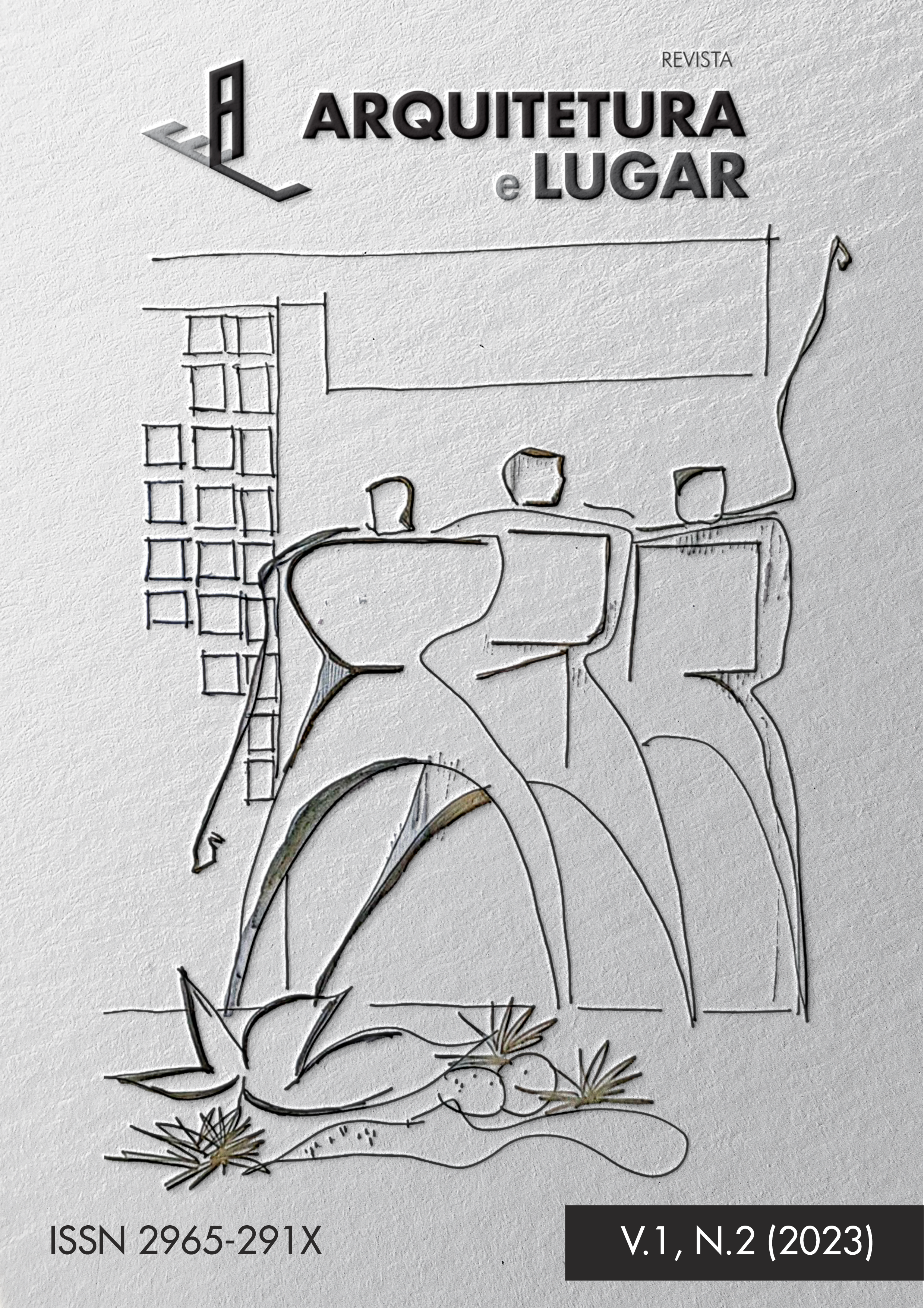TILE SURFACES OF MODERN RESIDENTIAL ARCHITECTURE IN CAMPINA GRANDE-PB
Abstract
The tile panels can be understood as preserving elements of the Portuguese cultural heritage, and thanks to the transformations of their graphics, this product has molded itself to different historical contexts, consecrating itself as an element of cultural representation of different regions. Based on this premise, the present work seeks to contribute to the deepening of tile knowledge, more specifically in the modern period in Campina Grande-PB, focusing on tile compositions, present in two residences designed by the architect Geraldino Duda. Faced with such a proposition, it becomes pertinent to use the material, developed by the research group Architecture and Place – GRUPAL – at the Federal University of Campina Grande (UFCG). In this context, the input from the collected material will be discussed through the prism of surface design, together with the relevant aspects in the sphere of visual language, acting exclusively on the compositions of the tile murals, in an attempt to understand the content imagery that was generated from the identified compositions, highlighting the aspects diffused in the compositions from the murals.
Downloads
References
AFONSO, A. A poética da construção residencial moderna campinense. Tectônica e modernidade. Manaus: 7º DOCOMOMO Norte Nordeste. 2017.
AFONSO, Alcilia. O trabalho do grupo de pesquisa arquitetura e lugar: Resgate da documentação da arquitetura moderna no agreste paraibano. Campina Grande. 1950-1980. Revista Jatobá, v. 2, 2020.
AFONSO, Alcilia; PEREIRA, Ivanilson Santos. Origem e consolidação da arquitetura moderna em Campina Grande/PB: personagens e projetos. 1950-1970. Revista Jatobá, v. 2, 2020.
AMORIM, Léa. A paisagem recriada: a sedução do processo recria memória na demolição do patrimônio histórico. In GURJÃO, Eliete Queiroz. Imagens multifacetadas da histórica de Campina Grande. Campina Grande: PMCG, 2000.
CRESWELL, J.W. Projeto de Pesquisa. Métodos qualitativo, quantitativo e misto. São Paulo: SAGE, 2010.
DONDIS, D. Sintaxe da Linguagem Visual. São Paulo.Livraria Martins Fontes, 1997.
FEITOSA, Adele Pereira. Composição visual no design de superfície: diretrizes para configuração de padronagens contínuas bidimensionais. 2019. Dissertação de Mestrado. Universidade Federal de Pernambuco.
FREIRE, Adriana Leal de Almeida. Modernização e modernidade: uma leitura sobre a arquitetura moderna de Campina Grande (1940-1970). 2010. Tese de Doutorado. Universidade de São Paulo.
GOMES, A. K. F. COMPOSIÇÃO VISUAL DA OBRA AZULEJAR MODERNA DE CAMPINA GRANDE-PB: um levantamento dos painéis de 1960 a 1970. 2022. Dissertação (Mestrado em Design) – Universidade Federal de Campina Grande-PB, Centro de Ciências e Tecnologia, Unidade Acadêmica de Design, Programa de Pós-Graduação em Design. Campina Grande - Paraíba, 2022.
LUCCA, Gustavo Rogério. O DESMANCHE DO PATRIMÔNIO INDUSTRIAL NO CENTRO DE CRICIÚMA. ARQUITETURA•HISTÓRIA•PATRIMÔNIO, 2017. Disponível em: https://arquiteturahistoriaepatrimonio.wordpress.com/2017/10/14/o-desmanche-do-patrimonio-industrial-no-centro-de-criciuma/. Acesso em: 29/06/2022.
MENESES, Camilla T. AFONSO, Alcília. DOCUMENTAÇÃO DA ARQUITETURA MODERNA RESIDENCIAL EM CAMPINA GRANDE, PB: Um estudo sobre as residências de Geraldino Duda na década de 1960. Icomos Brasil. Belo Horizonte, 2016
SIMÕES, J. Azulejaria Portuguesa no Brasil (1500-1822). Lisboa: Fundação Calouste Gulbenkian, 1990.
WANDERLEY, Ingrid M. Azulejo na arquitetura brasileira: os painéis de Athos Bulcão. São Paulo: Dissertação (Mestrado em Arquitetura), Universidade de São Paulo–USP, 2006.
WONG, Wucius. Princípios de forma e desenho. São Paulo: Martins Fontes, 2010.
ZANCHETI, Silvio. Declaração de significância: um instrumento de salvaguarda do patrimônio arquitetônico. In: XII Congresso Internacional de Reabilitação do Patrimônio Arquitetônico e Edificado. 2014.
Downloads
Published
Versions
- May 19, 2023 (2)
- May 1, 2023 (1)
How to Cite
Section
License
Copyright (c) 2023 Architecture and Place Journal

This work is licensed under a Creative Commons Attribution-NonCommercial-NoDerivatives 4.0 International License.
Authors who publish in this journal agree to the following terms:
1. Authors retain the copyright and grant the journal the right of first publication, with the article simultaneously licensed under the Creative Commons Attribution License BY NC ND, which allows the sharing of article with acknowledgment of authorship and initial publication in this journal;
2. Authors are authorized to take additional contracts separately, for non-exclusive distribution of version of the article published in this journal (e.g. publish in institutional repository or as a book chapter), with acknowledgment of authorship and initial publication in this journal;
3. Authors are allowed and encouraged to publish and distribute their research work online (e.g. in institutional repositories or on their personal page) once the editorial process has been completed, as this can generate productive changes, as well as increase the impact and the citation of published article (See The Effect of Open Access);
4. It is not recommended to publish and distribute the article before its publication, as this may interfere with its blind peer review.


